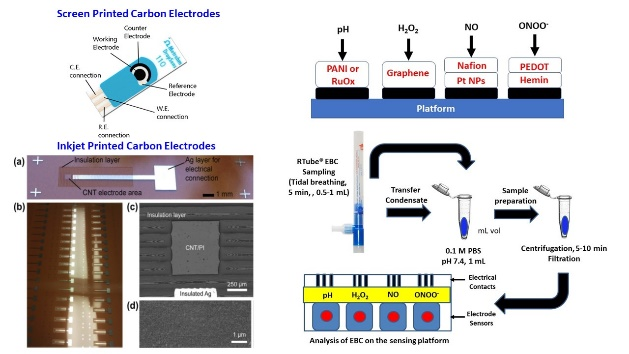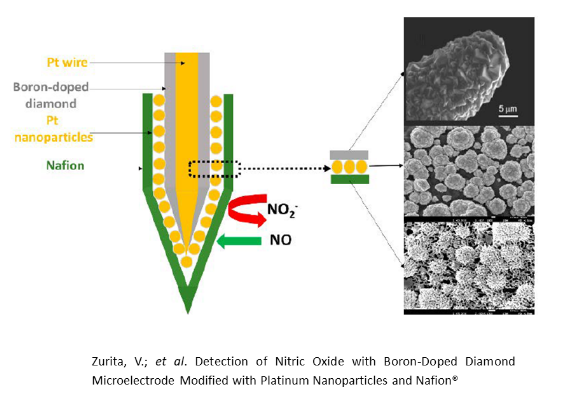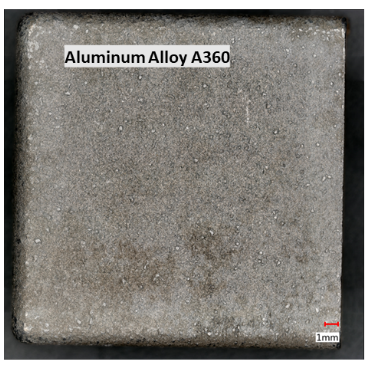Greg M. Swain

Research
Electrochemistry, Carbon Material Science, Corrosion and Neuroanalytical Chemistry
(Research Description PDF)
Research in our group is interdisciplinary and spans several fields: physical and analytical electrochemistry, carbon material science, point-of-care medical diagnostics, neuroanalytical chemistry, and corrosion of additively manufactured metal alloys. We conduct fundamental research to address key problems and technological needs in health and the environment. Our core science lies in the preparation, processing and application of multiple carbon materials including conducting diamond films and powders, nitrogenincorporated tetrahedral amorphous carbon films, and screen- and inkjet-printed carbons.

Electrochemical Reaction Kinetics and Mechanisms – Factors controlling electrontransfer kinetics and mechanisms of soluble redox systems at boron-doped diamond and nitrogen-incorporated tetrahedral amorphous carbon thin-film electrodes are being investigated in aqueous, organic, and ionic liquid electrolytes. We seek to learn how factors such as the surface chemistry, electrode microstructure and doping level affect electrochemical reaction rate constants and mechanisms.

– The use of an electrochemical sensing platform for multiple potentially relevant biomarkers in collected exhaled breath condensate is a new paradigm in respiratory disease treatment and management. Modified screen- and inkjetprinted carbon electrodes are being used in diagnostic technology for the monitoring and care of patients with lung cancer, pneumonitis, COPD, obliterative bronchiolitis, cystic fibrosis, and general respiratory tract infections, which all are characterized by oxidative and nitrosative stress. Key inflammatory markers targeted are pH, hydrogen peroxide, nitric oxide, and peroxynitrite.
We are also working on similar diagnostic technology for electrochemically monitoring biomarkers of wound healing and infection.

– In vitro electrochemical methods, immunohistochemistry and other analytical tools are being used in collaborative research to better understand how potential changes in neuromuscular signaling in the gastrointestinal tract are associated with pathological conditions in animal models of obesity and neurodegenerative disease. Molecules, such as serotonin, nitric oxide, ATP and acetylcholine, are being detected with diamond microelectrodes and microelectrode sensors.

Additively Manufactured Metal Alloys and Coating Systems for Corrosion Control – Additive manufacturing (AM), or 3D printing, is the process of fabricating objects layer-by-layer, as opposed to traditional subtractive manufacturing technologies. We seek to understand how the surface texture, alloy microstructure and elemental composition affect the electrochemical behavior of AM aluminum, steel, and titanium alloys prepared by laser powder-based sintering and fused filament fabrication methods. It is also of interest to learn how surface pretreatments and coating systems mitigate corrosion on these alloys. Electrochemical methods, various microscopies and surface science tools are routinely used in these studies.
Contact / Webpage
Area(s) of Interest
Analytical (An)
Biological (Bi)
Material (Ma)
Selected Publications
Detection of Cisplatin with Boron-Doped Diamond Thin-Film Electrodes Using Flow Injection
Analysis and Ion Exclusion Chromatography with Amperometric Detection. Jacobs, AI, Njue, AW and Swain GM. ELECTROANALYSIS 37 (2025) e70007.
Electrochemical Determination of Ibuprofen by Batch‐injection Analysis Using a Boron‐Doped
Ultrananocrystalline Diamond Electrode. Prete MC, da Rocha LR, Segatelli MG, Medeiros RA, Swain GM, and Teixeira Tarley
CR. ELECTROANALYSIS 37 (2025) e202400121.
Detection of Diclofenac and Carbamazepine Using Voltammetry and Flow Injection Analysis
at Boron-Doped Diamond Thin-Film Electrodes. Jacobs AI, Zwane S., Jarosova R, Zamora MD, Kuvarega AT and Swain GM. ELECTROANALYSIS
36 (2024) e202400157.
Measurement of Human and Bovine Exhaled Breath Condensate pH Using Polyaniline Modified
Flexible Inkjet-Printed Nanocarbon Electrodes. Jacobs AI, Prete MC, Lesch A, Sebio AA, Teixeira Tarley CR and Swain GM. ACS OMEGA
9 (2024) 40841-40856
Material Characterization and Electrochemical Properties of Titanium Alloy 5553 Prepared
by Selective Laser Melting as Processed and after Abrading and Polishing. Dammulla I, Weston R, Mahmud ZU, Saha S, McFall-Boegeman S, Rice L, Dwyer JH, Kmetz
T, Boehlert CJ and Swain GM. ACS OMEGA 31 (2024) 34021-34035.
CV
Editor-in Chief, Diamond and Related Materials (Elsevier), 2011-present
Member of the Neuroscience Program and The Fraunhofer Center for Coatings and Laser Applications (CCL)
Adjunct Appointments: Departments of Chemical Engineering and Materials Science, and Pharmacology and Toxicology
B.A., 1985, Univ. of Texas at Dallas
Ph.D., 1991, Univ. of Kansas
Postdoctoral Research Fellow, 1991-92, Space Power Institute and the Department of Chemical Engineering, Auburn Univ.
JSPS Postdoc¬toral Research Fellow, 1992-93, Tohoku Univ., Japan
Awards
| Year | Award | Organization |
|---|---|---|
| 2018 | Outstanding Faculty Award | College of Natural Science |
| 2015 | Corrosion Best Paper Award | |
| 1992 - 1993 | JSPS Postdoctoral Research Fellow | Tohoku University, Japan |
| 1991 - 1992 | Postdoctoral Research Fellow | Space Power Institute and the Department of Chemical Engineering, Auburn University |
| 1991 | Ph.D. | University of Kansas |
| 1985 | Bachelor of Arts | University of Texas at Dallas |
| Associate Editor | Diamond and Related Materials |